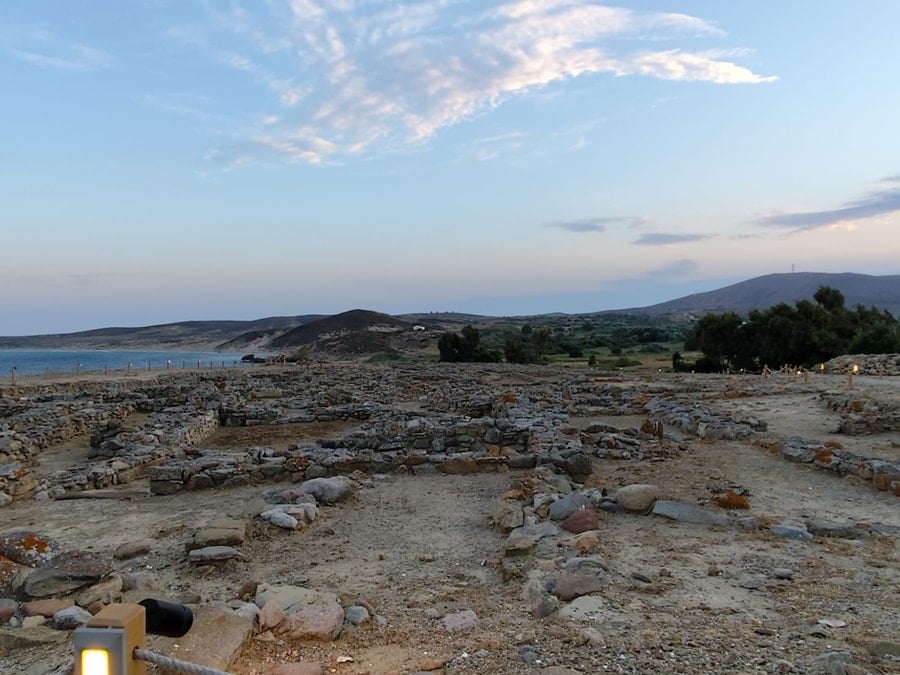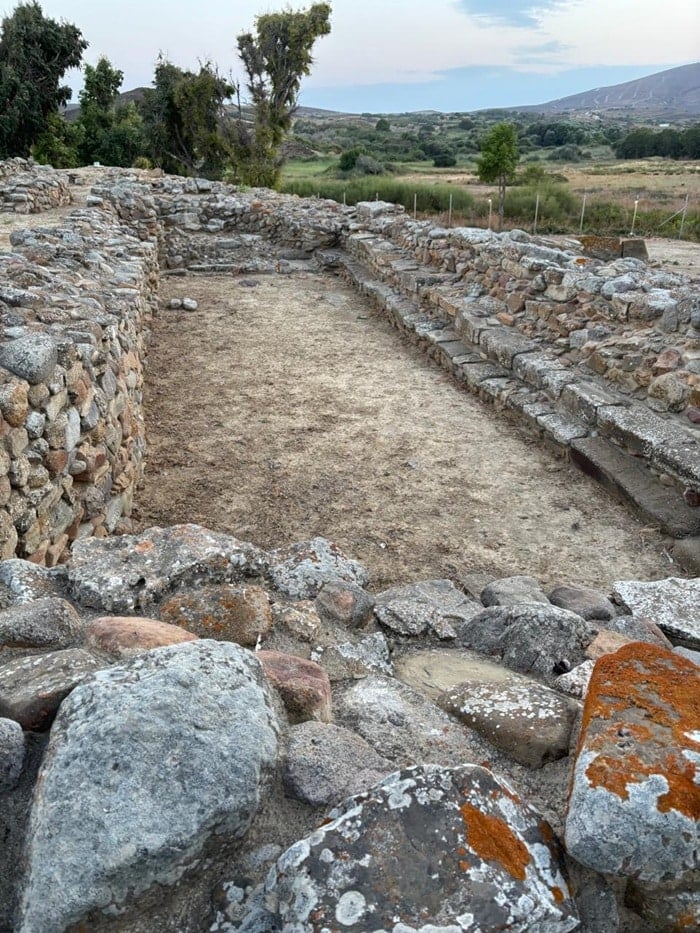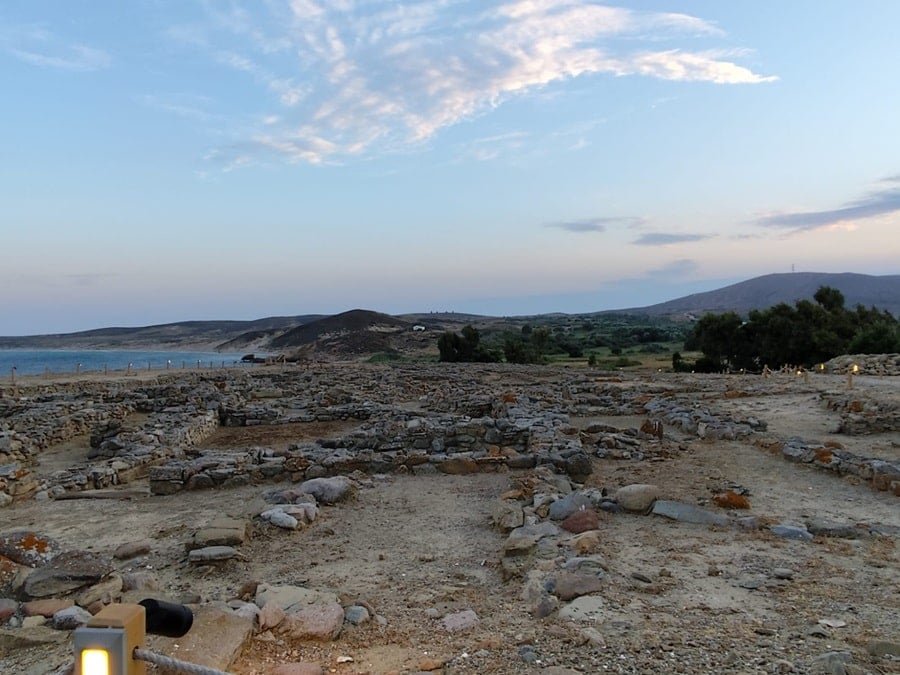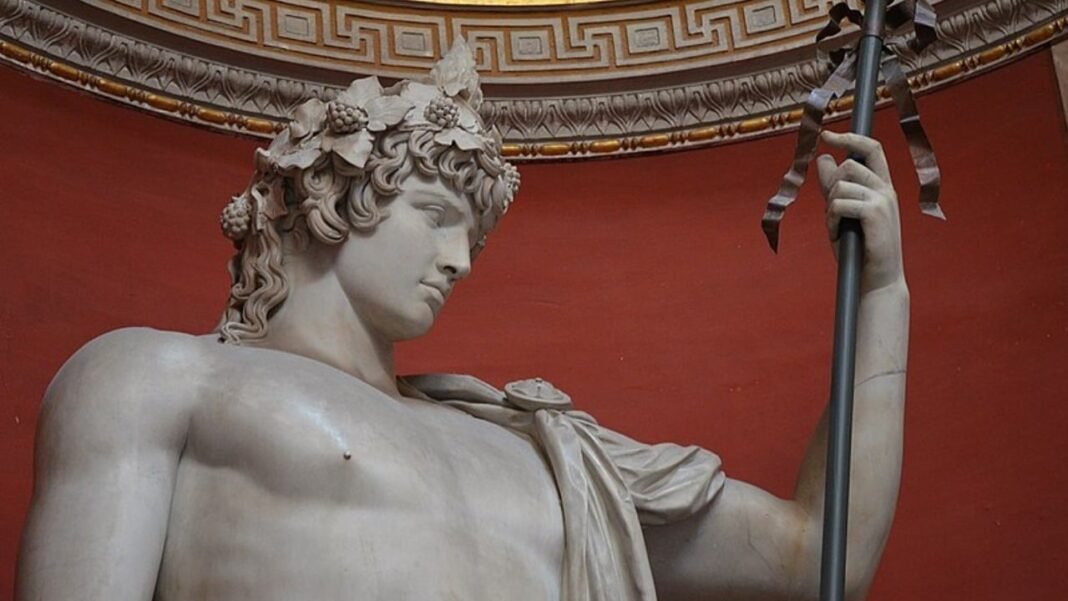
Greece officially opened the restored archaeological site of Poliochni on Lemnos, widely regarded as “the oldest city in Europe.”
The site, dating back to the 3rd millennium BC, offers unique insights into early urban planning and social organization. The extensive restoration, funded by the Regional Operational Programme of the North Aegean-NSRF 2014-2020 and the Recovery and Resilience Fund, included preserving and restoring 22 building islands, improving accessibility for visitors, and creating new educational and interactive resources.
Culture Minister Lina Mendoni highlighted Poliochni as a tangible link to a broader prehistoric network in the Aegean, which includes sites like Thermi on Lesvos, Emporio on Chios, and Palamari on Skyros.
She also connected Lemnos‘ history to Greek mythology, noting the island’s ties to the metallurgist god Hephaestus and the story of Hypsipyle and Jason, all of which contribute to its “timeless identity.”
Poliochni’s history on the eastern coast of Lemnos
Poliochni is a remarkably significant archaeological site on the eastern coast of the island of Lemnos. Its history spans from the mid-5th millennium to the end of the 2nd millennium BC, with the main urban development occurring during the Early Bronze Age.
Poliochni has early urban features, including a sophisticated road network, public buildings, and a form of assembly hall (“bouleuterion”). The “bouleuterion,” a rectangular building with stepped seats, is considered by some to be the earliest evidence of democracy in Europe, where the community’s elders would meet to discuss civic matters.

Italian archaeologists who first excavated the site in the 1930s developed a color-coded system to identify the different chronological layers of the settlement. The major periods include:
- Black Period (3700-3200 BC): The earliest settlement with small oval huts.
- Blue Period (3200-2700 BC): A period of significant expansion, with the construction of a defensive wall and a population of around 800-1,000 people.
- Green Period (2700-2400 BC): The city’s peak, with a population estimated at nearly 1,500.
- Red Period (2400-2200 BC): The city began to decline, though metalworking and trade continued.
- Yellow Period (2200-2100 BC): The city was largely abandoned after a catastrophic earthquake.
Advanced urban planning and a wealth of artifacts
Even in its early stages, Poliochni showed signs of advanced urban planning. Excavations have revealed strong retaining walls, paved roads with drains, wells, and stone-built houses organized into distinct blocks.
Poliochni’s strategic location on a protected bay made it a key center for maritime trade, particularly in metals. Its economy was also based on agriculture, fishing, and textile production. Archaeological finds show strong commercial ties with other Aegean sites, Asia Minor, and the Greek mainland. The city was a contemporary and likely a commercial rival of early Troy, located directly across the sea.
The site has yielded a wealth of artifacts, including distinctive pottery styles and a “treasure” of gold jewelry similar to the famous “Priam’s Treasure” found at Troy. These finds highlight the city’s wealth and advanced craftsmanship.
The recent restoration project, as mentioned by Minister Mendoni, has made the site more accessible and educational for visitors, ensuring that this important piece of European history is preserved and shared with the public.


